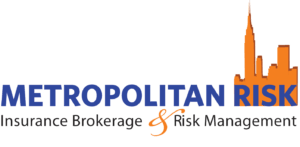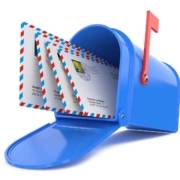On Friday, March 25, 2020, the US Senate passed the CoronaVirus Aid, Relief and Economic Security Act (CARES Act), to help provide financial relief to the people and business of America. This bill is a $2 Trillion dollar relief in response to the economic fallout from the fast-developing Coronavirus pandemic. The CARES Act is meant to provide direct financial aid to American families, payroll and operating expense support for small business and loan assistance for industries affected by the pandemic. Here is a breakdown of some of the topics the CARES Act covers:
What is the Paycheck Protection Program?
The Paycheck Protection Program, one of the largest sections of the CARES Act, is the most important provision in the new stimulus bill for most small businesses. This new program sets aside $350 billion in government-backed loans, and it is modeled after the existing SBA 7(a) loan program many businesses already know.
Who Qualifies for the Paycheck Protection Program?
This program was created as an incentive for small businesses with fewer than 500 employees and select businesses with 1,500 employees to  maintain payroll through June and expands the SBA network so that more banks, credit unions, and lenders can issue those loans. The goal is for small businesses to no lay off workers and rehire laid-off workers that lost jobs due to COVID-19 disruptions.
maintain payroll through June and expands the SBA network so that more banks, credit unions, and lenders can issue those loans. The goal is for small businesses to no lay off workers and rehire laid-off workers that lost jobs due to COVID-19 disruptions.
What Is The Maximum Loan Amount A Business Can Recieve Though The Paycheck Protection Program?
The maximum loan amount under the Paycheck Protection Act is $10 million, with an interest rate no higher than 4%. No personal guarantee or collateral is required for the loan. The lenders are expected to defer fees, principal and interest for no less than six months and no more than one year.
What Can These Funds Be Used For?
Businesses can use funds from the Program loans to cover expenses including:
- Payroll costs, including compensation to employees; payments for vacation, parental, family, medical or sick leave; severance payments; payments required for group health care benefits (including insurance premiums), retirement benefits, and state and local employment taxes
- Interest payments on any mortgage obligations or other debt obligations incurred before February 15, 2020 (but not any payments or prepayments of principal)
- Rent
- Utilities
However, the money cannot be used for compensation of individual employees, independent contractors, or sole proprietors in excess of an annual salary of $100,000; compensation of employees with a principal place of residence outside the United States; or leave wages already covered by the Families First Coronavirus Response Act.
How Are Loans Made Under The Paycheck Protection Program Different From Traditional 7(a) Loans?
Unlike traditional SBA 7(a) loans, no personal guarantee will be required to receive funds and no collateral needs to be pledged. Similarly, the CARES Act waives the requirement that a business shows that it cannot obtain credit elsewhere. In lieu of these requirements, borrowers must certify that the loan is necessary due to the uncertainty of current economic conditions; that they will use the funds to retain workers, maintain payroll, or make lease, mortgage, and utility payments; and that they are not receiving duplicative funds for the same uses.
The SBA will not collect any yearly or guarantee fees for the loan and all prepayment penalties are waived. Payment of principal, interest, and fees will be deferred for at yeast6months but not more than a year.
The SBA has no recourse against any borrower for non-payment of the loan, except where the borrower has used the loan proceeds for a non-allowable purpose.
What Are The Loan Forgiveness Requirements?
Borrowers are eligible for loan forgiveness for 8 weeks commencing from the origination date of the loan of payroll costs and rent payments, utility payments, or mortgage interest payments. Eligible payroll costs do not include annual compensation greater than $100,000 for individual employees.
The amount of loan forgiveness may be reduced if the employer reduces the number of employees as compared to the prior year, or if the employer reduces the pay of any employee by more than 25% as of the last calendar quarter. Employers who re-hire workers previously laid off as a result of the COVID-19 crisis will not be penalized for having a reduced payroll for the beginning of the relevant period. Forgiveness may also include additional wages paid to tipped workers.
Borrowers must apply for loan forgiveness to their lenders by submitting required documentation (as discussed in further detail below) and will receive a decision within 60 days.
If a balance remains after the borrower receives loan forgiveness, the outstanding loan will have a maximum maturity date of 10 years after the application for loan forgiveness.
How Does A Business Apply For A Loan Under the Paycheck Protection Program?
We expect additional guidance from the SBA regarding how to apply for Program loans, including additional resources on the SBA website about how to find a qualified lender. Borrowers who have outstanding SBA loans may also want to contact their existing lenders to inquire about applying for loans under the Program.
Is Relief Available For Businesses With Pre-existing SBA Loans?
Yes. The SBA will pay the principal, interest, and associated fees on certain pre-existing SBA loans for 6 months.
Does the CARES Act Affect Any Other Loans Available To Small Businesses?
Yes. The maximum loan amount for an Express Loan is increased from $350,000 to $1 million.
The CARES Act also expands eligibility for borrowers applying for an Emergency Economic Injury Disaster Loan (EIDL) grant. Under the Act, emergency EIDLs are available for businesses or cooperatives with fewer than 500 employees, sole proprietors or independent contractors, or Employee Stock Ownership Plans (ESOPs) with fewer than 500 employees. Additionally, the Act waives requirements that (1) the borrower provide a personal guarantee for loans up to $200,000, (2) that the eligible business be in operation for one year prior to the disaster, and (3) that the borrower be unable to obtain credit elsewhere. The SBA is also empowered to approve applicants for small-dollar loans solely on the basis of their credit score or “alternative appropriate methods to determine an applicant’s ability to repay.”
Most significantly for borrowers seeking an immediate influx of funds, borrowers may receive a $10,000 emergency advance within three days after applying for an EIDL grant. If the application is denied, the applicant is not required to repay the $10,000 advance. Emergency advance funds can be used for payroll costs, increased material costs, rent or mortgage payments, or for repaying obligations that cannot be met due to revenue losses.
Borrowers may apply for an EIDL grant in addition to a loan under the Paycheck Protection Program, provided the loans are not used for the same purpose. If a borrower received a loan under 7(b)(2) after January 31, 2020, the borrower may refinance the outstanding balance as part of a loan under the Program.
For more resources on the CARES Act:
- Check out the U.S. Chamber’s Small Business Loan Guide.
- To help you manage your business through the coronavirus crisis, the U.S. Chamber of Commerce has created a toolkit for businesses and a customizable flyer for businesses to communicate their coronavirus efforts to customers.
- For more information pertaining to your specific location, you can find your local Chamber of Commerce here.
-
The CARES Act: What You Need to Know About Emergency Small Business Relief
- Coronavirus Aid, Relief, and Economic Security Act: What Small Businesses Need to Know

 Photo by Timon Studler on Unsplash
Photo by Timon Studler on Unsplash




